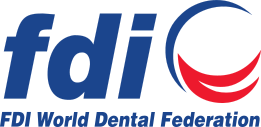Noma – eradicating a preventable disease to save lives
Context
Noma is a noncommunicable necrotizing disease that typically occurs in young children living in extreme poverty.
In 2023, the World Health Organization (WHO) added noma to its list of neglected tropical diseases.1 Noma typically occurs in children aged 2–6 years living in extreme poverty.1 Africa is the most affected continent, although cases have also been reported in Asia, the Americas and other regions.1
Noma is a preventable disease. However, untreated noma causes death for 90% of the patients within a few days. Many survivors suffer life-changing facial disfigurement, impairment in their ability to eat, speak and participate socially, and creating the need for reconstructive surgery. When noma is detected early, its progression can be halted through basic hygiene, nutrition, and antibiotics.1
Whilst hard to assess, the WHO has estimated up to 770,000 suffer from noma (its prevalence) with 140,000 new cases each year.1 Lack of healthcare in areas affected by noma, together with early death, stigma and traditional beliefs, mean numerous cases remain undetected. While its aetiology and pathogenesis are poorly understood, the cause seems to be non-specific polymicrobial organisms and risk factors include malnutrition, underlying infections, poor oral health and poverty.1
Scope
Noma exists in many but not all regions. Few oral health professionals work in those geographic areas most affected by noma, yet FDI is global and inclusive. Many areas with high rates of noma also experience dental workforce shortages. This policy is, therefore, a global call for action.
Definitions
Noma: a rapidly progressing severe gangrenous disease of the mouth and the face. Also known as cancrum oris, necrotizing ulcerative stomatitis or gangrenous stomatitis.
Principles
Noma is preventable through tackling the underpinning social inequality, which is best achieved by working in partnership across governmental, non-governmental and academic domains. By raising awareness of noma across health and social care professionals internationally, this policy statement aims to improve early detection, prompt treatment and understanding about the lifetime oral health needs of survivors.
Policy
In collaboration with governmental, non-governmental and academic organizations:
- FDI advocates for the inclusion of oral health for all in government policies and health surveillance systems worldwide, to strengthen the leadership of Ministries of health through improved inter- and multisectoral collaboration.1
- FDI supports the WHO programme and any other programme that works to strengthen and develop the capacities of health and social care professionals to prevent, promptly detect and manage cases of noma.1,2
- FDI supports research to improve and share understanding of the epidemiological and aetiological factors contributing to the onset of noma, as well as its pathophysiological mechanisms and ways to tackle the modifiable causes of noma.
All health and social care professionals:
FDI recommends that all health and social care professionals, particularly those working in areas where noma is prevalent, should:
- Emphasize the importance of optimal oral hygiene and nutrition to help prevent the development of noma.
- Raise awareness among the local population about noma, including its symptoms and stages, its risk factors and that it is neither contagious nor associated with witchcraft.
- Recognize that progression occurs within days so early identification and prompt treatment are vital.
- Be familiar with the WHO treatment guidelines.3
Providers of education and training for health and social care professionals:
In areas where noma is endemic, FDI recommends that all health and social care professionals apprise themselves of education and training that:
- Acknowledges their life-saving role in identifying noma early and caring for people affected by it.
- Recognizes the lifelong impact of noma, including the importance of mental health counselling to help remove stigma and enhance the reintegration of survivors and their families into society.
- Includes the basic principles of oral examination and recognition of the reversible (simple gingivitis, necrotising ulcerative gingivitis and oedema) and irreversible (gangrenous, scarring and sequalae) stages of noma;2
- Explains the risk factors and complex range of circumstances that lead to the progression from gingival inflammation to the gangrenous tissue destruction of noma.
Keywords
Noma, oral tissue, infection.
Disclaimer
The information in this Policy Statement was based on the best scientific evidence available at the time. It may be interpreted to reflect prevailing cultural sensitivities and socio-economic constraints.
References
- 1. Word Health Organization. Noma Fact Sheet. Available from: https://www.who.int/news-room/fact-sheets/detail/noma [Accessed 6 October 2025].
- 2. Word Health Organization. Global strategy and action plan on oral health 2023–2030. Available from: https://www.who.int/publications/i/item/9789240090538 [Accessed 6 October 2025].
- 3. Word Health Organization. NOMA is a severe disease. It is treatable if detected and managed early! Available from: https://www.afro.who.int/sites/default/files/2017-07/Information_brochure_EN.pdf [Accessed 6 October 2025].
